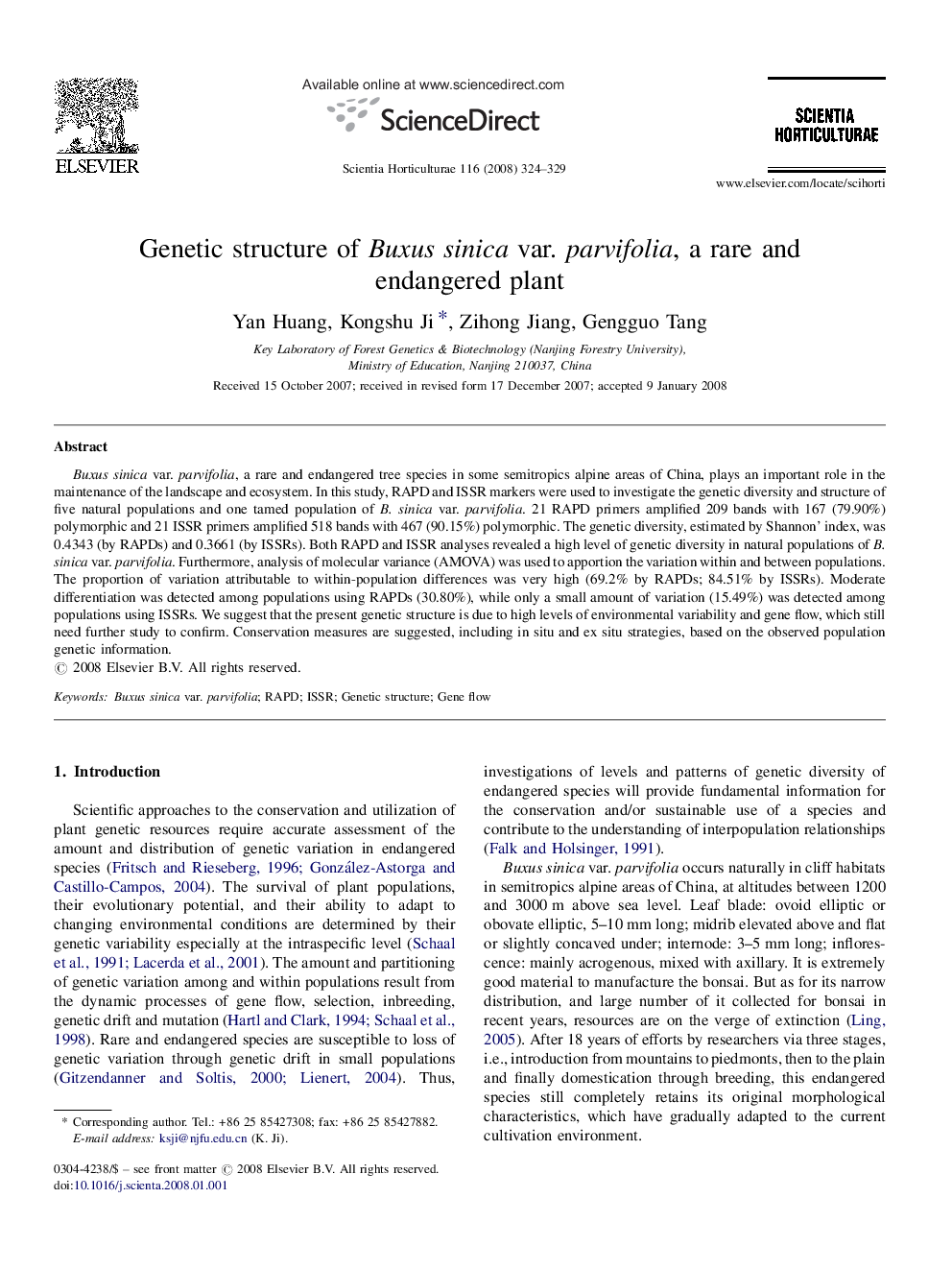| Article ID | Journal | Published Year | Pages | File Type |
|---|---|---|---|---|
| 4569686 | Scientia Horticulturae | 2008 | 6 Pages |
Abstract
Buxus sinica var. parvifolia, a rare and endangered tree species in some semitropics alpine areas of China, plays an important role in the maintenance of the landscape and ecosystem. In this study, RAPD and ISSR markers were used to investigate the genetic diversity and structure of five natural populations and one tamed population of B. sinica var. parvifolia. 21 RAPD primers amplified 209 bands with 167 (79.90%) polymorphic and 21 ISSR primers amplified 518 bands with 467 (90.15%) polymorphic. The genetic diversity, estimated by Shannon' index, was 0.4343 (by RAPDs) and 0.3661 (by ISSRs). Both RAPD and ISSR analyses revealed a high level of genetic diversity in natural populations of B. sinica var. parvifolia. Furthermore, analysis of molecular variance (AMOVA) was used to apportion the variation within and between populations. The proportion of variation attributable to within-population differences was very high (69.2% by RAPDs; 84.51% by ISSRs). Moderate differentiation was detected among populations using RAPDs (30.80%), while only a small amount of variation (15.49%) was detected among populations using ISSRs. We suggest that the present genetic structure is due to high levels of environmental variability and gene flow, which still need further study to confirm. Conservation measures are suggested, including in situ and ex situ strategies, based on the observed population genetic information.
Keywords
Related Topics
Life Sciences
Agricultural and Biological Sciences
Horticulture
Authors
Yan Huang, Kongshu Ji, Zihong Jiang, Gengguo Tang,
